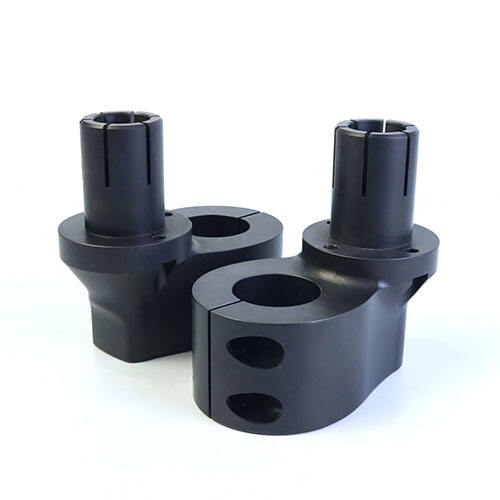Plieniniai tvirtinimo elementai: tikslaus gamybos pagrindas
Stipriai besikeičiančioje gaminiama 2025 metų aplinkoje paklausos didesnio tikslumo, greitesnių gamybos ciklų ir didesnės kainos efektyvumo toliau skatina inovacijas. Pagrindiniai šiems tikslams pasiekti yra plieniniai įtvirtinimai —ilgaamžiai, tiksliai suprojektuoti įrankiai, kurie tvirtai laiko apdirbamas dalis apdirbimo, surinkimo ar patikros metu. Nepaisant jų esminės reikšmės, įtvirtinimų dizainas ir medžiagų parinkimas dažnai nepakankamai vertinami diskusijose apie gamybos optimizavimą. Šiame straipsnyje siekiama pabrėžti techninius aspektus, naudos pranašumus ir praktines pasekmes dėl aukštos kokybės plieninių įtvirtinimų naudojimo pramonės taikymuose.

Tyrimo metodai
1. Projektavimo metodas
Tyrimui buvo taikomas praktinis, kartojamas projektavimo procesas, nukreiptas į stabilumo maksimalizavimą ir vibracijos mažinimą. Įtvirtinimai buvo modeliuojami naudojant CAD programinę įrangą ir simuliuojami veikiant įvairioms apkrovoms, kad būtų galima prognozuoti našumą.
2.Duomenų šaltiniai
Duomenys buvo surinkti iš kontroliuojamų apdirbimo bandymų, atliktų pramoninėje aplinkoje. Matavimai apėmė matmeninį tikslumą, paviršiaus apdorojimo kokybę ir ciklo trukmes. Patikimumui užtikrinti atlikta pakartotinių bandymų.
3. Eksperimentiniai įrankiai
Buvo naudojamas CNC frezavimo staklius, aprūpintas aukštos tikslumo jutikliais, skirtais stebėti jėgas ir poslinkius. Lyginimui buvo išbandyti tvirtinimo įtaisai iš AISI 4140 plieno kartu su aliuminio ir liejamojo geležies atitikmenimis.
Rezultatai ir analizė
1. Pagrindiniai rezultatai
Specialūs plieniniai tvirtinimo įtaisai parodė geresnę standumą ir minimalų lankstumą veikiant apkrovai. Detalės fiksavimo nuokrypis sumažėjo iki 40 % lyginant su aliumininiais tvirtinimo įtaisais.
2. Palyginamoji vertinimas
Rezultatai sutampa su ankstesniais tyrimais apie tvirtinimo įtaisų našumą, tačiau papildo ankstesnius tyrimus, nustatant medžiagos pasirinkimo poveikį ilgalaikiam nusidėvėjimui ir šiluminei stabilumui. Plieniniai tvirtinimo įtaisai išlaikė tikslumą per 10 000 ciklų be reikšmingo blogėjimo.
Diskusija
1. Rezultatų interpretacija
Plieno didelis tamprumo modulis ir atsparumas nuovargiui lemia jo stabilų veikimą. Šios savybės sumažina tamprią deformaciją apdirbant, kas yra svarbu išlaikant tikslumą.
2. Apribojimai
Šis tyrimas buvo susitelktas į frezavimo operacijas; kitos procedūros, tokios kaip šlifavimas arba elektroerozinis apdirbimas, gali duoti kitokius rezultatus. Aplinkos veiksniai, tokie kaip drėgmė ir temperatūra, buvo kontroliuojami, tačiau gali turėti poveikio našumui realiomis sąlygomis.
3.Praktinės pasekmės
Gamintojai, investuojantys į plieninius tvirtinimo įrenginius, gali tikėtis mažesnio pertvarkymo kiekio, žemesnio broko lygio ir geresnio prisitaikymo prie aukštos tikslumo užduočių. Tai ypač aktualu tokioms pramonės šakoms kaip aviacija, automobilių gamyba ir medicinos prietaisai.
Išvada
Plieniniai tvirtinimo įrenginiai vaidina nepakeičiamą vaidmenį siekiant tikslumo gamyboje. Jų struktūriniai pranašumai lemia matomus tikslumo, kartojamumo ir eksploatacinio tarnavimo laiko patobulinimus. Būsimi tyrimai turėtų tirti hibridines medžiagas ir adaptuojamus tvirtinimo įrenginių projektavimus prototizminėse gamybos aplinkose.


